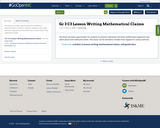
This lesson provides opportunities for students to examine what it means to subtract. Students solve tasks and write arguments and mathematical claims about how subtraction works.
- Subject:
- Mathematics
- Material Type:
- Lesson
- Date Added:
- 11/02/2019


This lesson provides opportunities for students to examine what it means to subtract. Students solve tasks and write arguments and mathematical claims about how subtraction works.

This resource provides opportunities for learners to explore situations that involve multiplying a mixed number by a fraction. This is remixable by adding in further supports for the range of learners in your class.
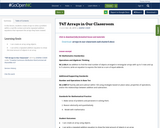
In this lesson, students create arrays to solve a problem within a real-life context and write repeated addition equations that represent the arrays they have created.
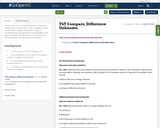
This resource is part of Tools4NCTeachers.
In this lesson, students solve a word problem using a strategy of choice and share the strategy to develop the concept of representing and solving problems involving addition and subtraction within 20. This lesson format may be used with any problem type appropriate for the grade.
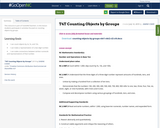
This resource is part of Tools4NCTeachers.
In this lesson students participate in activities focused on counting objects by groups.
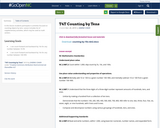
In this lesson students participate in activities focused on counting objects by tens. Lesson includes list of supplementary activities, which may be used as math centers.
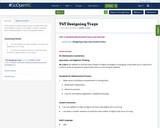
In this lesson, students explore ways to design trays that will fit different amounts of cookies in order to develop their understanding of arrays and repeated addition.
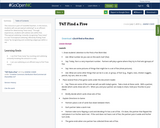
This resource is part of Tools4NCTeachers.
In this lesson, students will use perceptual subitizing* as an efficient method for determining "how many". Through experiences, students will subitize sets within five.
*Perceptual subitizing: instantly recognizing "how many" in a set
*Conceptual subitizing: efficiently finding "how many" by recognizing and combining subgroups within a set.

This resource is part of Tools4NCTeachers.
In this lesson, students will use perceptual subitizing* as an efficient method for determining "how many". Through experiences, students will subitize sets within five.
*Perceptual subitizing: instantly recognizing "how many" in a set
Conceptual subitizing: efficiently finding "how many" by recognizing and combining subgroups within a set.
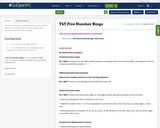
This resource is part of Tools4NCTeachers.
In this lesson, students compare two-digit numbers based on the meanings of the tens and ones digits.

This lesson is from Tools4NCTeachers. Students explore addition and subtraction Tasks and write mathematical claims about the concepts. This is remixable.
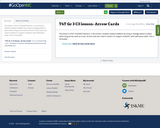
This lesson is from Tools4NCTeachers. In this lesson, students explore addition by using a strategy based on place value using arrow cards as a tool. Arrow Cards are used in Grade 2 to support students' work with place value. This is remixable.
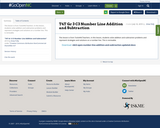
This lesson is from Tools4NCTeachers. In this lesson, students solve addition and subtraction problems and represent strategies and solutions on a number line. This is remixable.
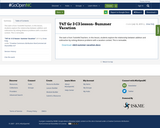
This lesson is from Tools4NCTeachers. In this lesson, students explore the relationship between addition and subtraction by solving distance problems with a vacation context. This is remixable.
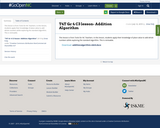
This lesson is from Tools for NC Teachers. In this lesson, students apply their knowledge of place value to add whole numbers while exploring the standard algorithm. This is remixable.
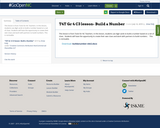
This lesson is from Tools for NC Teachers. In this lesson, students use digit cards to build a number based on a set of clues. Students will have the opportunity to create their own clues and work with partners to build numbers. This is remixable.
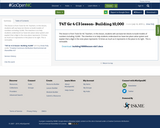
This lesson is from Tools for NC Teachers. In this lesson, students will use base-ten blocks to build models of numbers including 10,000. The intention is to help students understand our base-ten place value system and explain that a digit in the ones place represents 10 times as much as it represents in the place to its right. This is remixable.
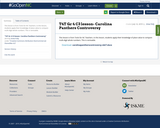
This lesson is from Tools for NC Teachers. In this lesson, students apply their knowledge of place value to compare multi-digit whole numbers. This is remixable.
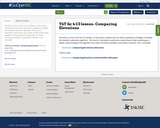
This lesson is from Tools for NC Teachers. In this lesson, students will use various subtraction strategies to develop the standard subtraction algorithm. This lesson is intended to extend over several days to help students gain a deeper understanding of the algorithm and make connections between computation methods. This is remixable.
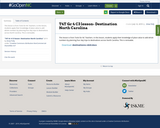
This lesson is from Tools for NC Teachers. In this lesson, students apply their knowledge of place value to add whole numbers by planning four day trips to destinations across North Carolina. This is remixable.